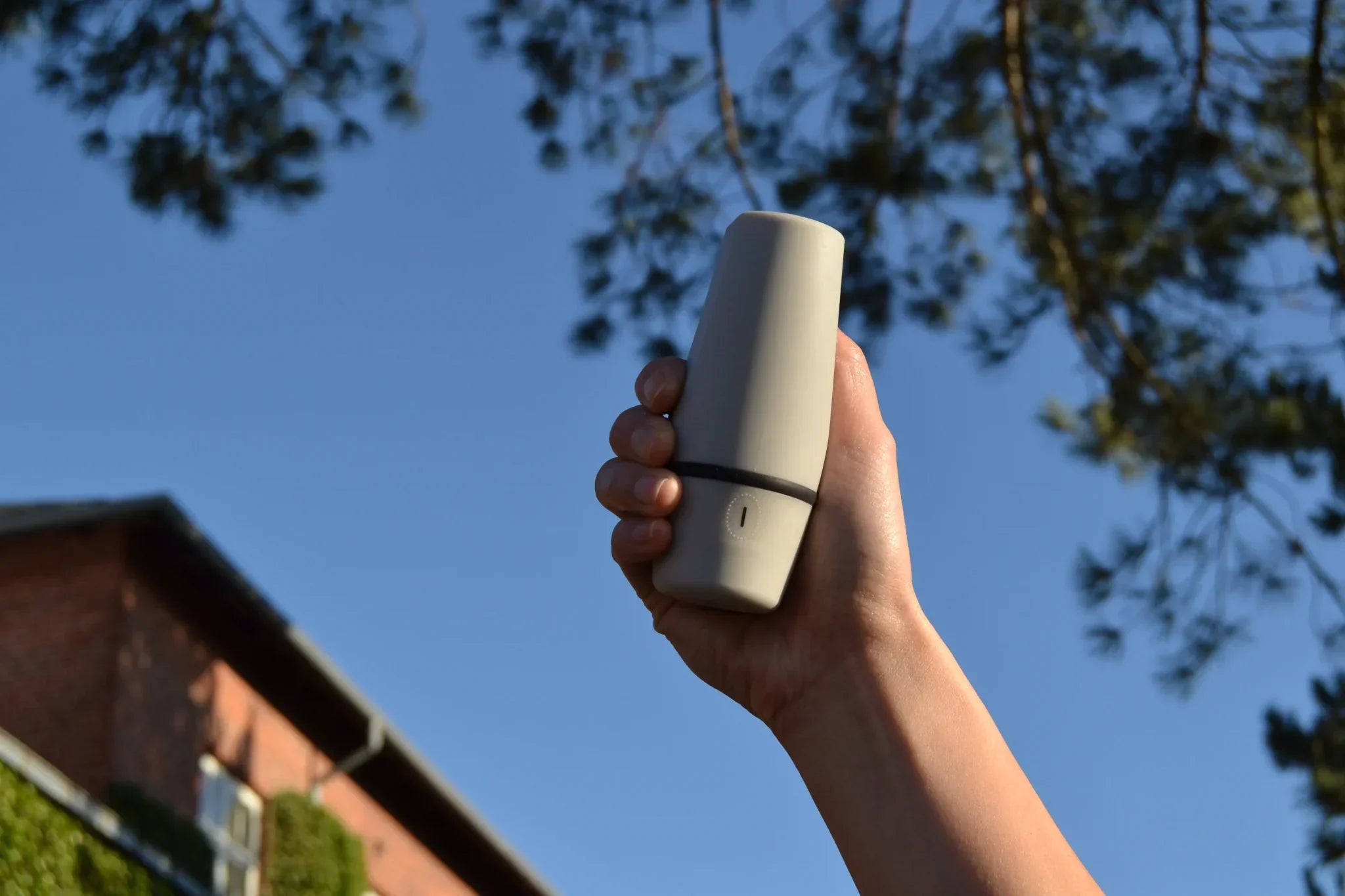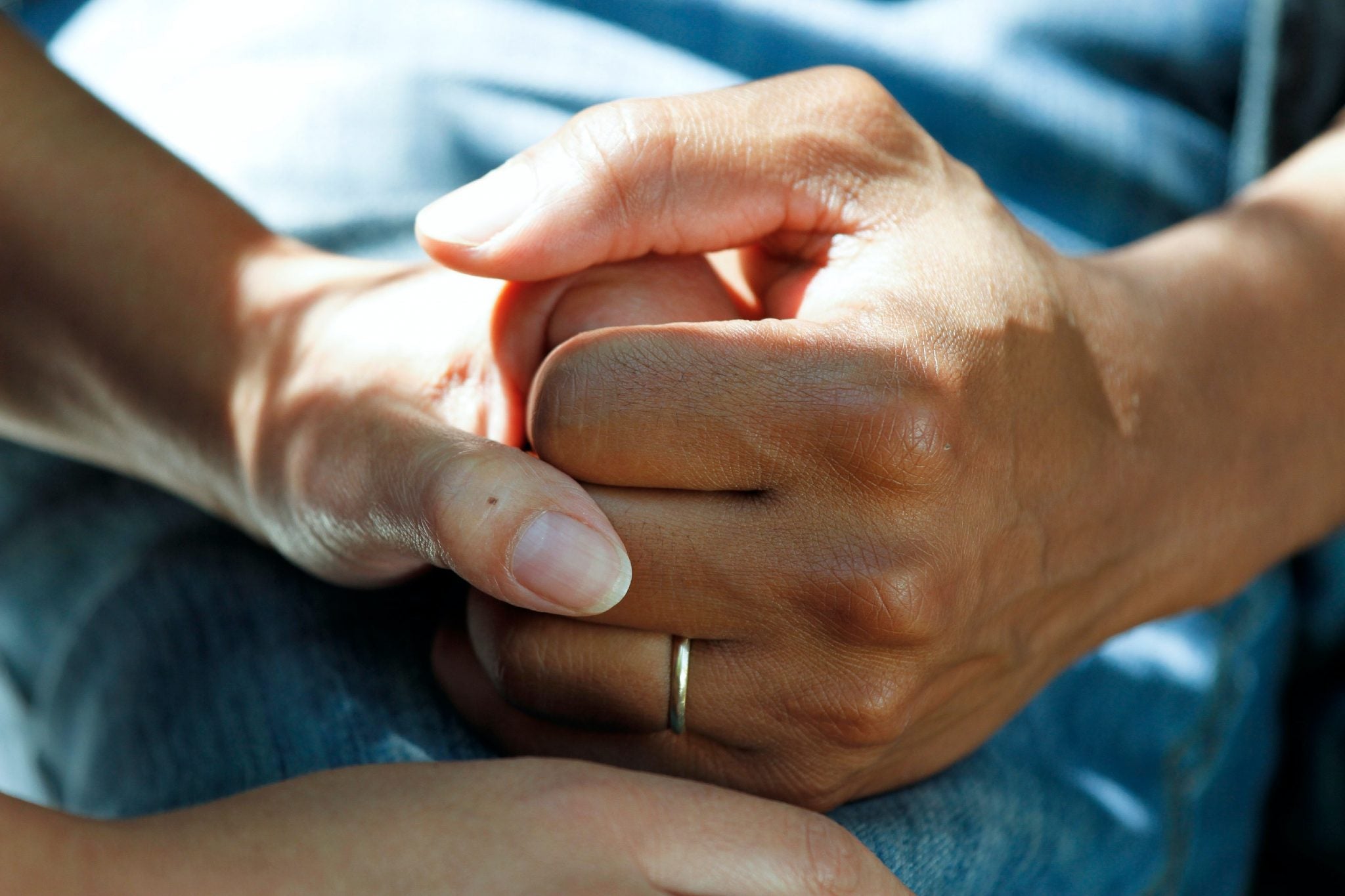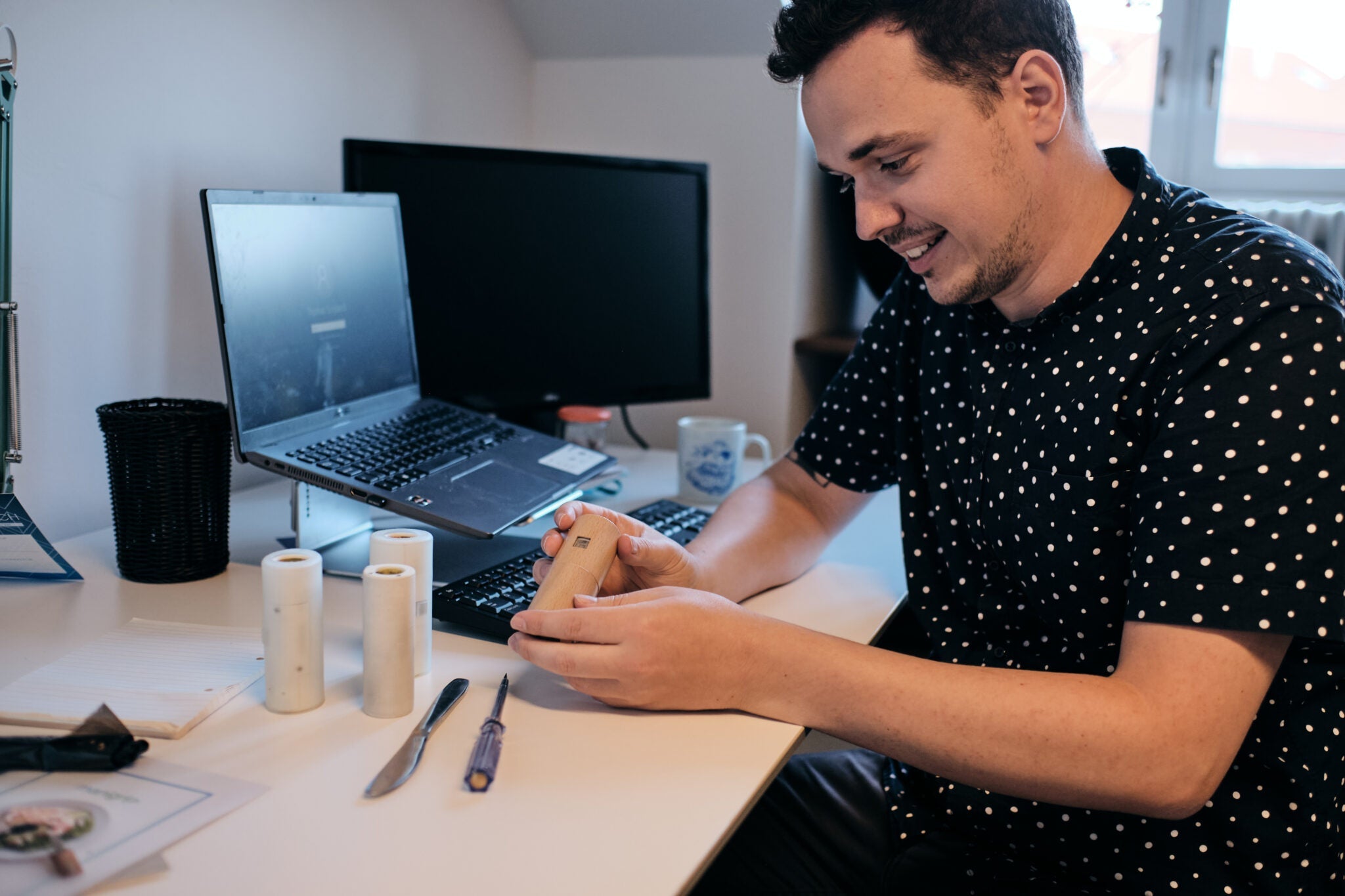Photo: Jess Porse Clemmensen
Author: Thomas Solgaard Andersen
In 2016, when we were at Aarhus University, we were tasked with designing a product for patients with chronic conditions. We had no plans or desires to start our own business and become entrepreneurs. Our only goal was to create something that could help as many people as possible. So how do you do that? We started by finding out which chronic condition is the most prevalent. A quick Google search showed that arthritis is one of the most prevalent chronic conditions in Denmark as well as in the rest of the world. In fact, there are 700,000 people in Denmark who have arthritis, and every day there are 3 new Danes who are diagnosed. But what did we know about arthritis? Absolutely nothing! So we decided to put Google on the shelf and get out into the real world to talk to people who had arthritis close to their bodies.
We contacted the Arthritis Association in the hope that they could refer us to some relevant people who could tell us about life with arthritis. After some time, an occupational therapist from Sano, a rehabilitation center for people with joint pain, contacted us. She welcomed us with open arms and had found two women, Winnie and Henny, who were kind enough to talk to us about life with arthritis. However, they were not the only women we gained insights from that day. The rumor that some young people were learning about arthritis and assistive devices quickly spread in the hallways. Therefore, there was no shortage of suggestions about what aids were missing and why the existing ones were not good enough for them. After that day, our heads were full of impressions, and our notebooks were full of… well, notes, so we went home and boiled all the insights down to two overall problems.
The first problem we encountered was that there were too many aids. There is an aid for every single daily activity, which creates a need for a large amount of aids. It is not the coolest thing when you have to go out the door and plan in advance which activities you will go through, so that you are not left without an aid in a given situation. The second problem was quite interesting. Several people told us that they thought the aids were ugly, which I wondered a lot about. Why bother with the appearance of an aid if it works? But Winnie said: “We don’t see ourselves as sick, just challenged. I have a little difficulty using my hands, but that doesn’t necessarily mean I am sick.” This is something that I have heard from many people with arthritis ever since. If you don’t see yourself as sick, it can be difficult to reconcile yourself with using something that looks like something sick people would use.
As a designer, I know how aesthetics affect us. So why it came as a surprise to me that there is a desire for assistive devices to be aesthetic in the same way as other household tools, I cannot understand. In this case, we saw that aesthetics are closely linked to one's identity. One wants to be seen as something other than one's suffering and to surround oneself with things that make one happy. The assistive devices we saw focused on function, but not on how one as a person felt about using the product. We later found out that 23% of publicly funded assistive devices are not used – mainly due to identity problems.
It was based on these two problems that we wanted to try to design something that could help people with arthritis. The idea was simple. We could solve the first problem if we created something that could be used for several activities. That way, you wouldn't have to carry an arsenal of aids with you every time you had to leave the door. Here, we looked at all the aids for the hands and tried to see what they had in common. It turned out that many of the aids were just ordinary everyday objects with an enlarged grip, so if we made an enlarged grip that could hold the object, we could actually cut out more than half of the aids. We wanted to solve the second problem by designing an exterior for the product that was nice and Scandinavian, and that radiated everything other than illness, hospital and disability. However, it turned out to be more complicated than it seemed. No matter what design we came up with, there would always be someone who didn't like it. In other words – there is no such thing as universally beautiful for everyone. This may not be news to a designer, but it taught us that if we were going to make something that many people would like, we had to design our product so that it could change appearance to suit people’s different tastes.
The solution was a removable cover that could be made in all sorts of colors, textures, and materials, so there was something for everyone. This way, the product could be more personal and accessible to everyone, to fit their aesthetic and identity. Developing the cover and appearance is an important next step, as all we have been able to show so far are unfinished prototypes that show the function but not the potential of the design.
Back to the story. With this idea, manifested in a very simple prototype, we submitted our graduation project and were ready for summer vacation. But our teacher thought that our idea was too good to just be a graduation project, so he approached us and asked if we wanted to continue working on the product. The idea had not crossed our minds, but we were ready to give it a chance. If nothing else, it would dress up our CV when we eventually had to go out into the real world as wage slaves. Shortly after, we were given a place in a community among other students and entrepreneurs at Aarhus University, where we were introduced to a whole new world (at least for humanities students) with business plans, budgets, market validation and a lot of other things that, by the way, can only be said in English. We swallowed it all in a steep learning curve, where we are still getting smarter with each passing day, even though we are now graduates.
Since then, we have spoken to over 100 people with arthritis to make sure the product is as relevant to our future customers as possible. And the product – yes, we named it Wini after the first person we got insights from.
Read more

Patient involvement and professional sparring are important key tools at Manigrip. We believe that the best products are developed in collaboration with those who work in the field and the patient...

Written by Emilie Buhl Pedersen – daughter and relative of a Parkinson's patient. The diagnosis In 2016, my mother was diagnosed with Parkinson's disease. At the time, I was 16 years old and h...

